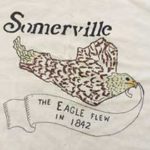
Eagle Feathers #212 – The Yankee Sculptor
By Bob (Monty) Doherty
Horatio Greenough was born in Boston in 1805, attended Philips Academy in Andover, graduated from Harvard College in 1825, spent the greater part of his life in Italy and died in Somerville. He was a member of the National Academy of Arts and Sciences which is now headquartered on Beacon Street in Somerville.
Known as the “Yankee Sculptor,” he created numerous historic museum pieces honoring many notables of his time. Some of his busts and statues included:
- Josiah Quincy, President of Harvard University
- Marquis de Lafayette, America’s youngest Revolutionary General
- Samuel F.B. Morse, artist and inventor of the Telegraph
- James Fenimore Cooper, his close friend and America’s first novelist
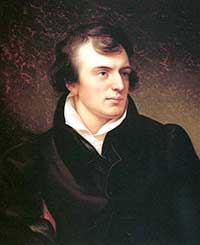
Horatio became the first American to make sculpturing his profession. On July 14, 1832, the United States Congress commissioned him to create a carving of George Washington. It was a huge, twelve-ton marble sculpture that was placed in the Capitol’s Rotunda. This was the nation’s first federally-funded monument and became Greenough’s greatest creation. Today, it is known as the Enthroned Washington; and after being moved to three different sites because of construction, it is now located in the National Museum of American History.
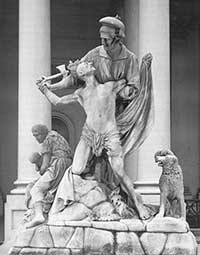
His famous group structure, The Rescue (1850) depicted Daniel Boone saving his family during an Indian attack. It stood on the East facade of the United States Capitol for over 100 years. President Lincoln took his first oath of office on May 4, 1861 in the shadow of this statue.
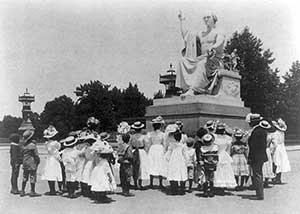
Horatio pushed himself hard, and his social and work circuit was far reaching. Despite suffering from exhaustion, depression and malaria, he continued to work. He entered McLean Hospital in Somerville in 1852 where he died. He was 47 years old, a patriotic Yankee stonecutter and is buried in Mount Auburn Cemetery in Cambridge.
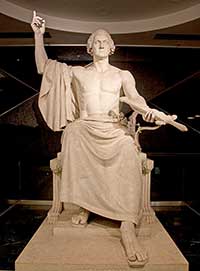















Reader Comments